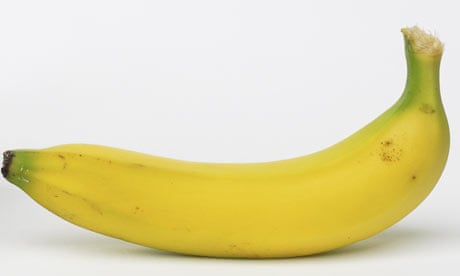The carbon footprint of bananas:
80g CO2e each
480g CO2e per kilo
Bananas are a great food for anyone who cares about their carbon footprint. For just 80g of CO2e you get a whole lot of nutrition: 140 calories as well as stacks of vitamin C, vitamin B6, potassium and dietary fibre. All in all, a fantastic component of a low-carbon diet.
Bananas are good for just about everyone – athletes, tennis pros, people with high blood pressure, everyday cycle commuters in search of an energy top-up, or anyone wishing to chalk up their recommended five portions of fruit and vegetables per day. There are three main reasons that bananas have such small carbon footprints compared with the nourishment they provide:
They are grown in natural sunlight, which means that no energy-intensive hot-housing is required.
They keep well, so although they are often grown thousands of miles from the end consumer, they are transported by boats, which per kilo of freight transported emit only 1% as much CO2 as planes do.
There is hardly any packaging, if any, because they provide their own. (You might sometimes see a bunch in a light plastic bag or wrapper, but this probably pays for itself carbon-wise by reducing the chance of customers ruining the fruit when they try to split a bunch.)
None of which is to say that bananas are too good to be true. Of the hundreds of banana varieties in existence, almost all the ones we get to eat are of the 'Cavendish' variety. The adoption of this monoculture in the pursuit of maximum, cheapest yields has been criticised for degrading land and requiring liberal use of pesticides and fungicides – sometimes at the expense of plantation workers. Furthermore, although land is dramatically better used for bananas than, say, beef in terms of nutrition per hectare, there are still parts of the world in which forests are being cleared for banana plantations.
That said, Fairtrade or organic bananas are widely available. Choose those and you are likely to be buying a food that is about as green as it gets – as long as you don't let them rot in your fruit bowl, that is. If you find yourself with bananas on the turn, they are great in cakes and smoothies.

Comments (…)
Sign in or create your Guardian account to join the discussion